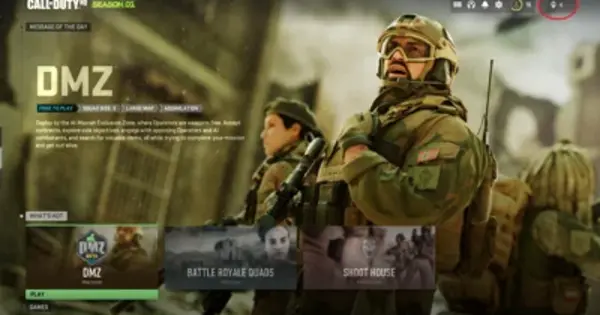1. The Birth of a Franchise: Early World War II Roots
The original Call of Duty launched in 2003, immersing players in the gritty battlefields of World War II. It differentiated itself with a strong focus on squad-based tactics, realistic weapons, and a cinematic narrative approach. Unlike earlier shooters, Call of Duty emphasized teamwork and varied perspectives by having players experience missions from the viewpoints of American, British, and Soviet soldiers.
This entry set the tone for the franchise’s hallmark blend of authenticity and blockbuster storytelling, quickly gaining critical acclaim and commercial success.
2. Transition to Modern Warfare: A Game-Changer
The release of Call of Duty 4: Modern Warfare in 2007 marked a dramatic shift. Moving away from historical warfare, it introduced a contemporary setting with cutting-edge military technology and tactics. The campaign featured a gripping, politically charged story with memorable characters like Captain Price and Soap MacTavish.
Most importantly, Modern Warfare revolutionized multiplayer gaming by popularizing perks, killstreaks, customizable loadouts, and fast-paced, skill-based competition. It established the template for online FPS games for years to come.
3. Expanding Settings: Diverse Timelines and Themes
Following Modern Warfare, the franchise explored various settings including:
-
World War II: A return to the franchise’s roots with revamped graphics and gameplay (Call of Duty: WWII).
-
Cold War and Vietnam: Titles like Black Ops and Black Ops Cold War delved into espionage and covert operations.
-
Futuristic Warfare: Games such as Advanced Warfare and Infinite Warfare introduced advanced technology, exosuits, and space combat.
-
Battle Royale: The launch of Call of Duty: Warzone in 2020 brought a free-to-play battle royale mode that quickly became a competitive staple.
This diversity keeps the franchise fresh and appeals to a wide range of players.
4. Campaign Mode: Cinematic and Immersive Storytelling
Call of Duty campaigns are known for their high production values, blockbuster set pieces, and emotional narratives. The series blends intense action with cinematic direction, creating memorable moments such as the "All Ghillied Up" mission or the dramatic final acts of Modern Warfare.
While some games prioritize multiplayer, the single-player campaigns often serve as engaging standalone experiences, drawing players into immersive stories of war, espionage, and heroism.
5. Multiplayer Evolution: The Heart of Call of Duty
Multiplayer modes are the cornerstone of Call of Duty’s enduring popularity. Features include:
-
Fast-Paced Gunplay: Tight, responsive controls emphasize reflexes and precision.
-
Customization: Extensive weapon and perk customization allows players to tailor their playstyle.
-
Progression Systems: Levels, unlockables, and seasonal content incentivize continued play.
-
Competitive Play: Ranked modes and esports tournaments cultivate a skilled player base.
The franchise’s multiplayer innovations have influenced many FPS games and created vibrant online communities.
6. Esports and Competitive Scene
Call of Duty boasts a thriving esports ecosystem, with leagues like the Call of Duty League (CDL) hosting professional teams worldwide. The franchise’s balanced gameplay and high skill ceiling make it well-suited for competitive play, attracting millions of viewers and generating significant prize pools.
Esports integration has helped maintain the franchise’s relevance in the fast-evolving gaming industry.
7. Cooperative Modes and Zombies
Beyond standard multiplayer, Call of Duty features cooperative modes such as Zombies, a fan-favorite since Call of Duty: World at War. The Zombies mode offers a unique mix of survival, strategy, and lore, often including complex Easter eggs and storylines.
Co-op missions and special events further diversify gameplay and appeal to players who prefer teamwork over competitive combat.
8. Technological Advancements and Graphics
Each Call of Duty installment pushes the envelope in graphics and audio design. The franchise has leveraged advancements in hardware to deliver realistic environments, detailed character models, and immersive soundscapes.
The transition from early 2000s graphics to modern photorealistic visuals underscores the franchise’s commitment to technical excellence.
9. Criticisms and Controversies
Despite its success, Call of Duty faces criticisms including:
-
Annual Releases: The yearly cycle sometimes leads to perceptions of repetitive gameplay or rushed development.
-
Microtransactions: Monetization through cosmetic items and battle passes has sparked debate.
-
Narrative Repetition: Some campaigns recycle similar war tropes or storylines.
-
Community Toxicity: Like many online shooters, the multiplayer environment can be prone to toxicity.
Developers continue to address these challenges while balancing innovation and player expectations.
10. The Future of Call of Duty
With new titles and expansions continually announced, Call of Duty shows no signs of slowing. Innovations in AI, cross-platform play, and cloud gaming are expected to shape its future. The franchise’s adaptability and massive fanbase ensure it will remain a dominant force in gaming for years to come.
Conclusion
Call of Duty has evolved from a niche WWII shooter into a multifaceted gaming powerhouse. Its blend of cinematic storytelling, intense multiplayer action, and technological innovation has shaped modern FPS games and competitive gaming culture. Whether you’re a casual player, a competitive esports athlete, or a fan of immersive campaigns, Call of Duty offers a dynamic and thrilling experience that continues to captivate millions around the world.






























